
Zipper Pouches
Zipper pouches are pretty easy to make in an embroidery machine hoop, if you keep track of each step. It’s all just straight-line sewing, so it’s easy to do on a conventional machine as well.
First, cut two outer pieces and two lining pieces. The front pieces can actually be a bit shorter (since the zipper takes up some of the space) but I cut them all at least 5.5″ x 7.5″ (a quarter inch larger than the stitch area all around).
If you want to quilt a piece of recycled packaging, the front “outer” piece can either be a piece of vinyl, or a piece of something with some loft, like polyester fleece or quilt fleece.
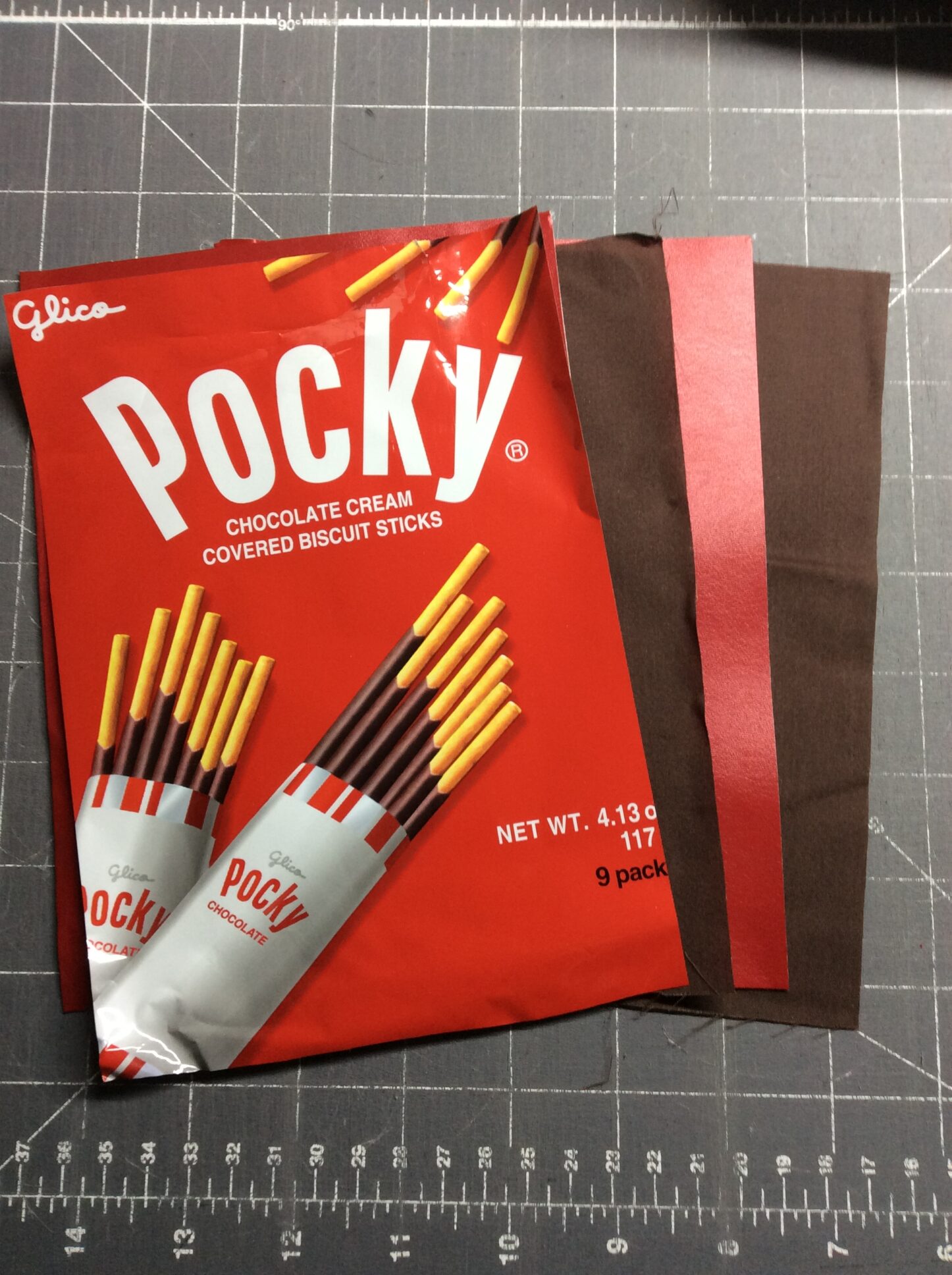
The first stitch color is the placement line.
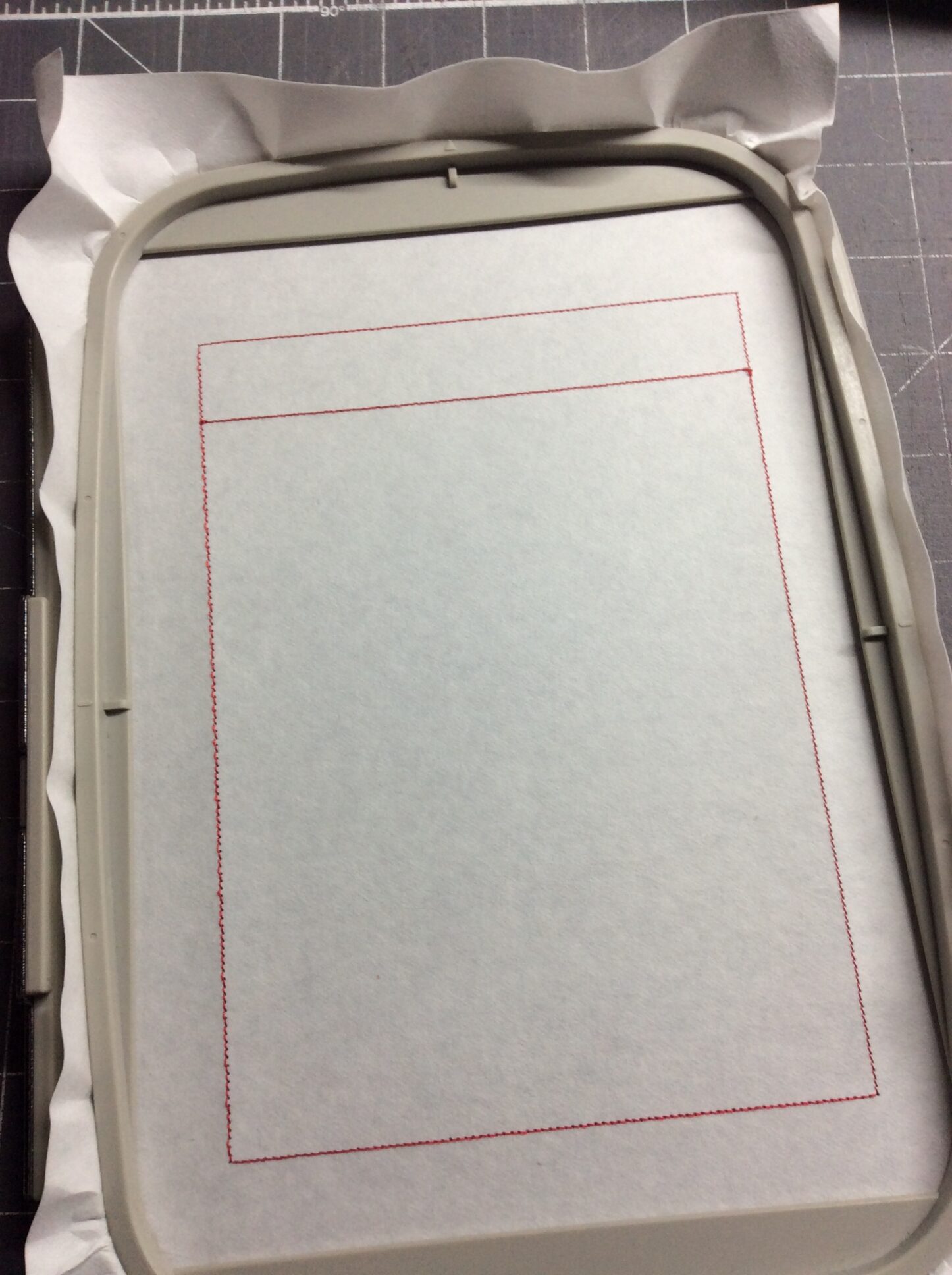
Align a zipper with the internal line. The zipper can be short enough that its stops fit inside the box, as long as the tails extend to at least the inner seams. If you’re using zipper end pieces, trim the zipper so that it won’t get caught in the side seams before tacking it down. Either way, make sure none of the stops land on the seams. Also, it’ll need to be a plastic coil zipper unless you feel comfortable stopping your machine and advancing it past the teeth.
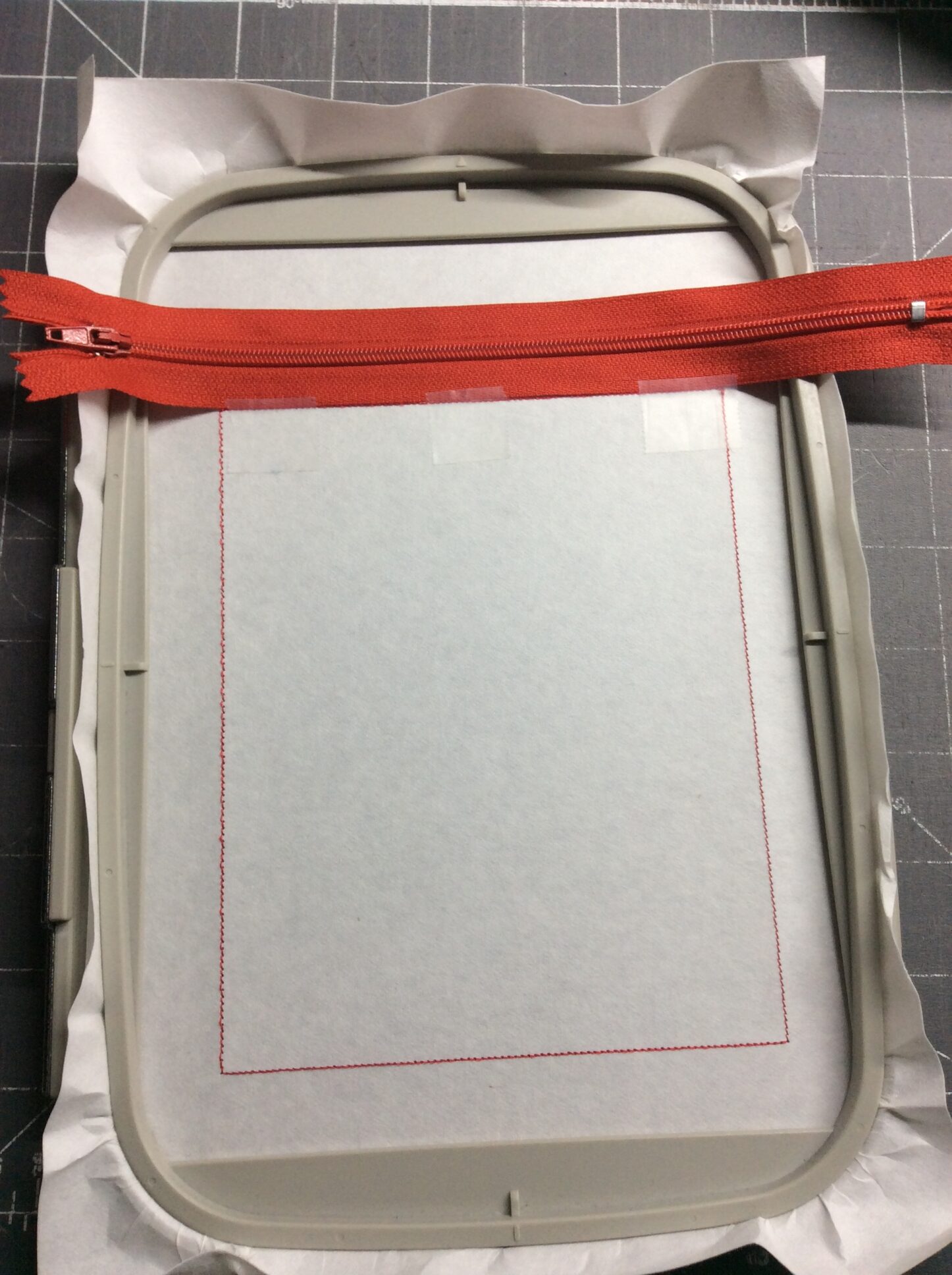
Optional: You can either use a zipper long enough to reach the side seams and skip the zipper end pieces, or you can add little fabric ends to the zipper now. Even if your zipper is long enough, the zipper ends give a more professional look and mean you’re not turning a seam with zipper teeth sewn into it. Check the middle-zip pouch for instructions on moving the zipper end pieces if you want to use an even shorter zipper.
Cut a piece of fabric long enough to overlap the side seam and zipper end seam by at least 1/4”. This fabric can either be something that matches the zipper, or more of the front fabric. Align it with the notches on the placement stitch, face down and pointing away from the side seam.
Fold the end piece toward the seam, finger-press or iron it (if you iron it, be careful of the zipper!). Tape the end in place before top-stitching.
Repeat the steps for the other side (or don’t, if you just want an end piece on one side, I guess). From here on out treat the zipper+ends the same as a complete zipper.
Align the front piece(s) with the lower edge of the zipper. It’ll be right side down, and also upside down so that when it flips down, it’ll be correctly aligned. My red vinyl has a white backing:
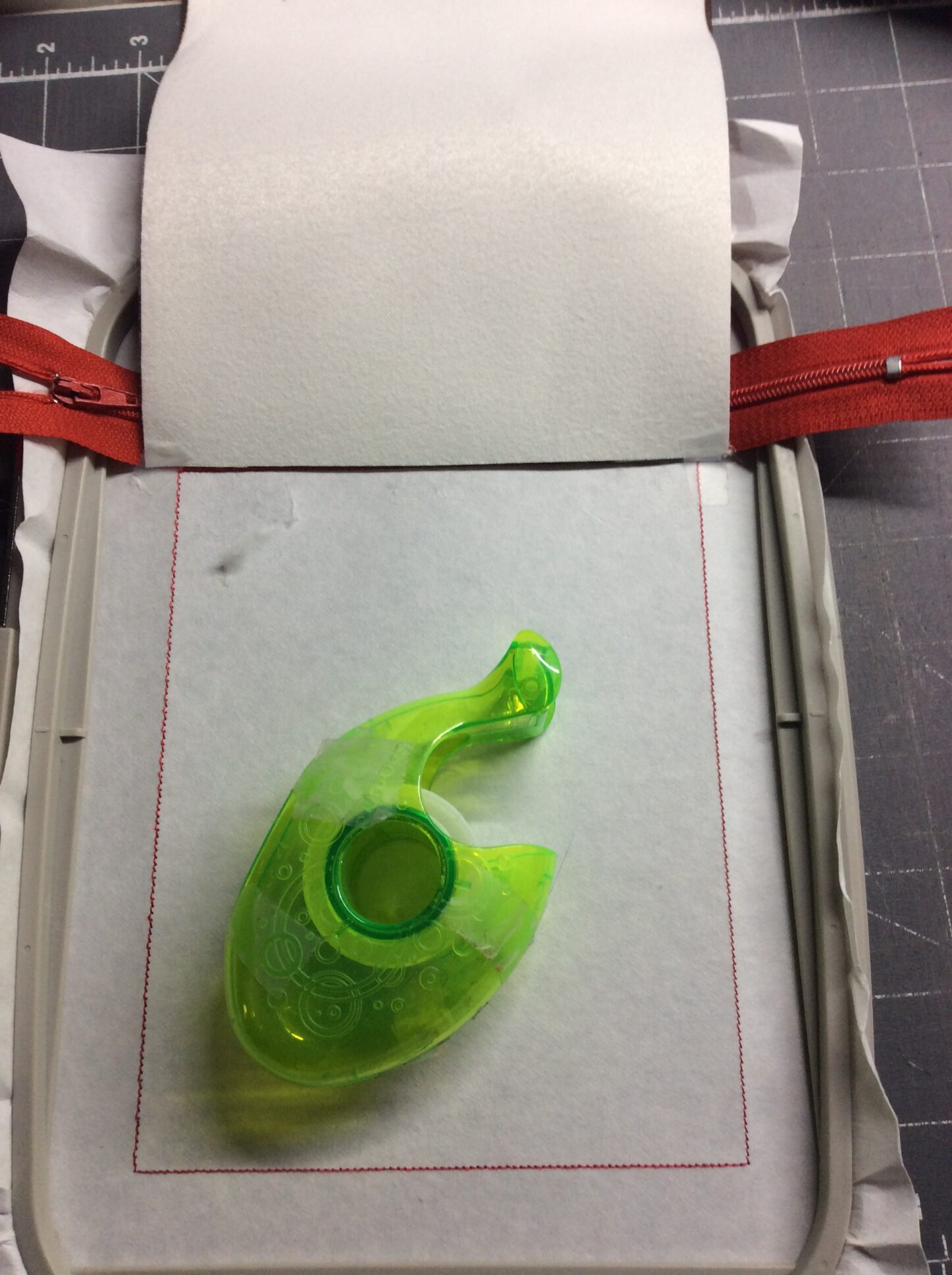
Then on the back, do the same with the front lining. It’s hard to see, but the placement stitching is right at the edge of the fabric.
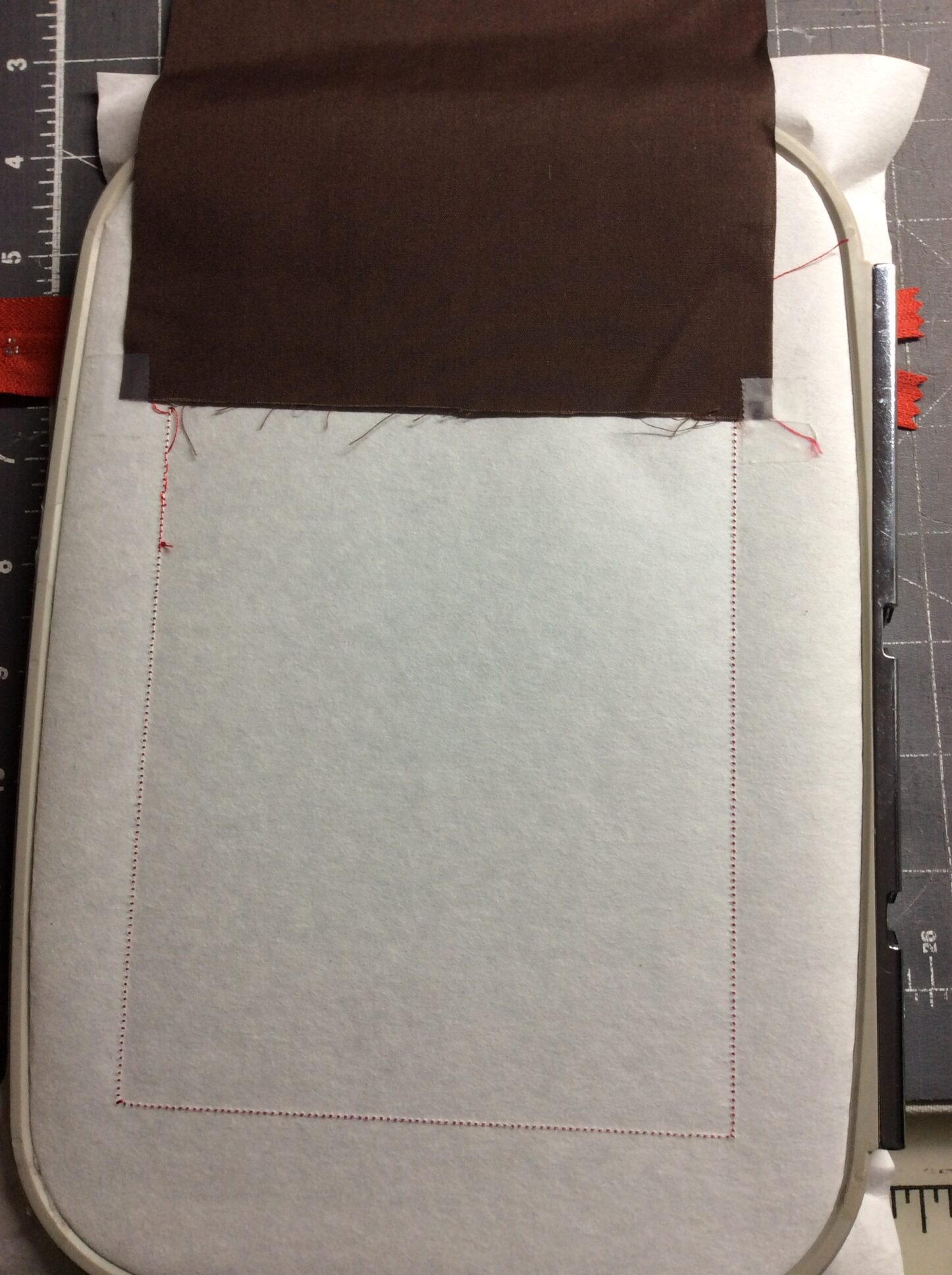
After the front fabric line is stitched, flip the lining down and finger-press or iron it. Tape it in place if necessary. You’ll want it to completely cover the placement stitching. If it looks like this, there’ll be a gap in the lining when you’re done and things will get lost in the pouch:
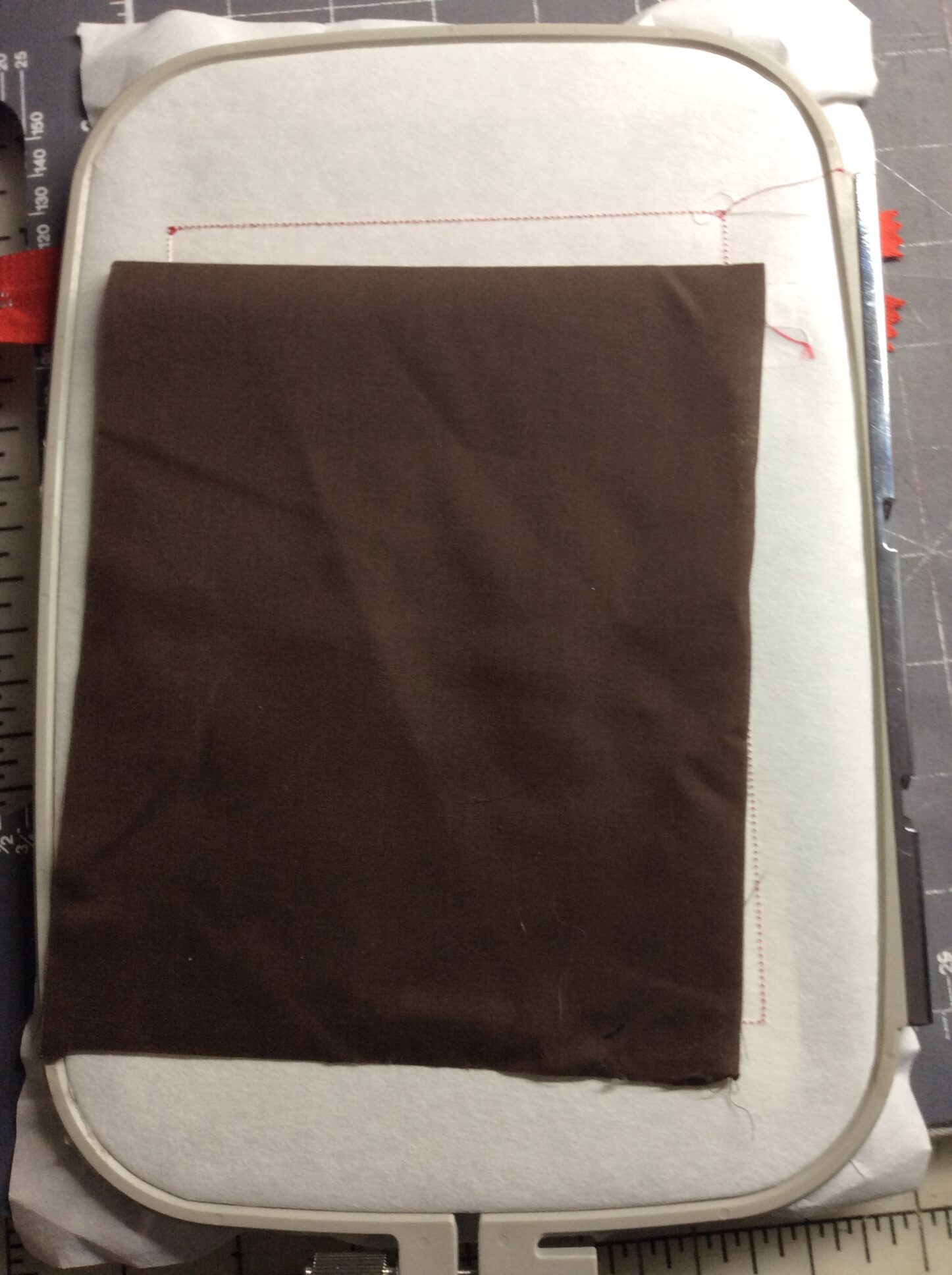
Flip the hoop over and do the same with the front pieces. The top-stitching will tack everything in place. Then fold the lining back up, if you’re going to put an embroidery design on the front. If you’re going to quilt the front, you can include the lining if you want, or not. I didn’t here.
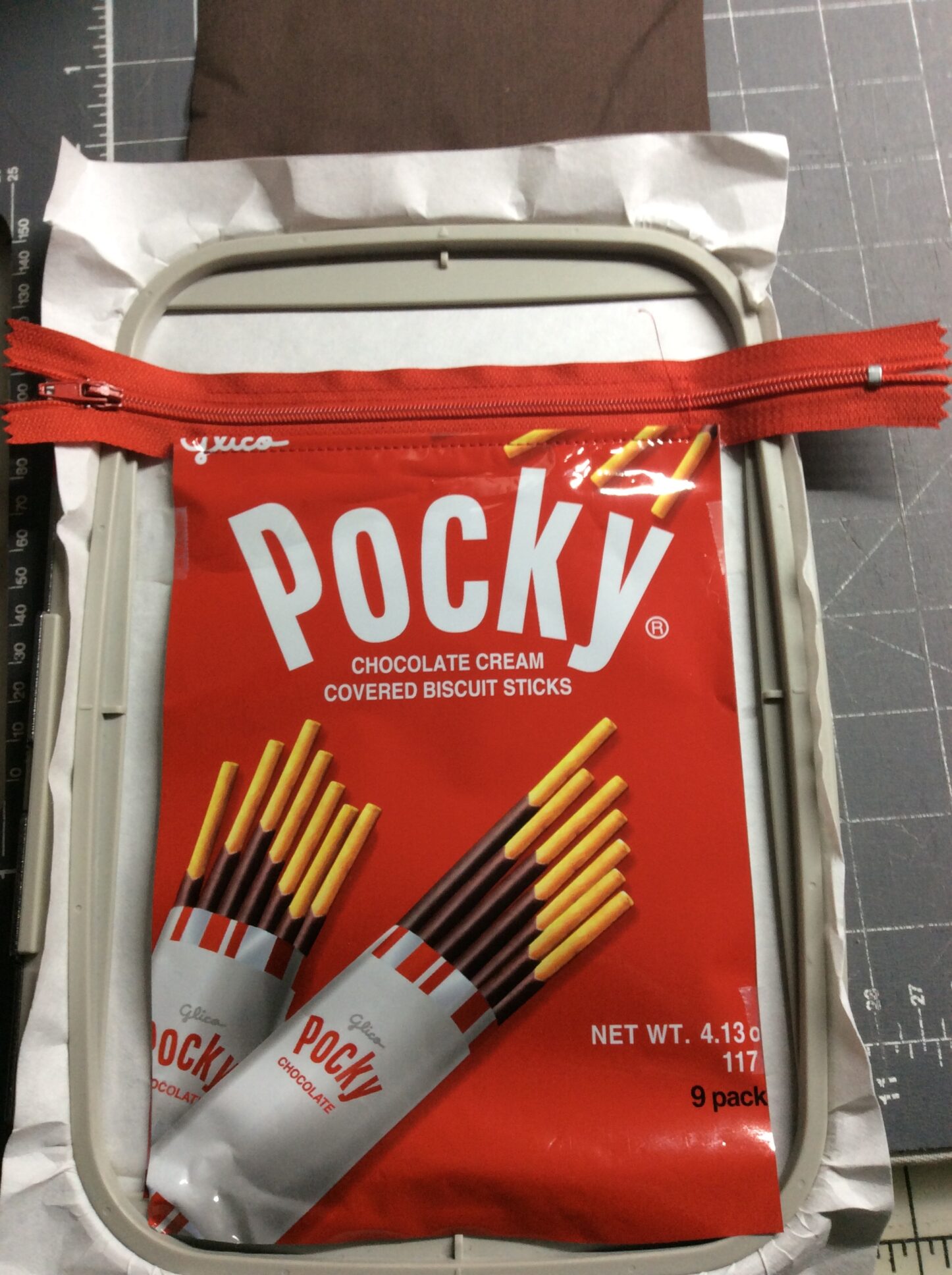
The next stitch color is another tackdown. It will hold the front to the stabilizer, and tack down a top stabilizer if you’re using one. Then switch out of this design to embroider any design you want, then come back and skip the quilting color.
If you’re quilting, you can skip that tackdown; the quilting goes top to bottom and will tack as it goes.
If you’re not doing either (because you have a fancy vinyl, or you have a pre-embroidered front), you can skip the tackdown and the quilting now.
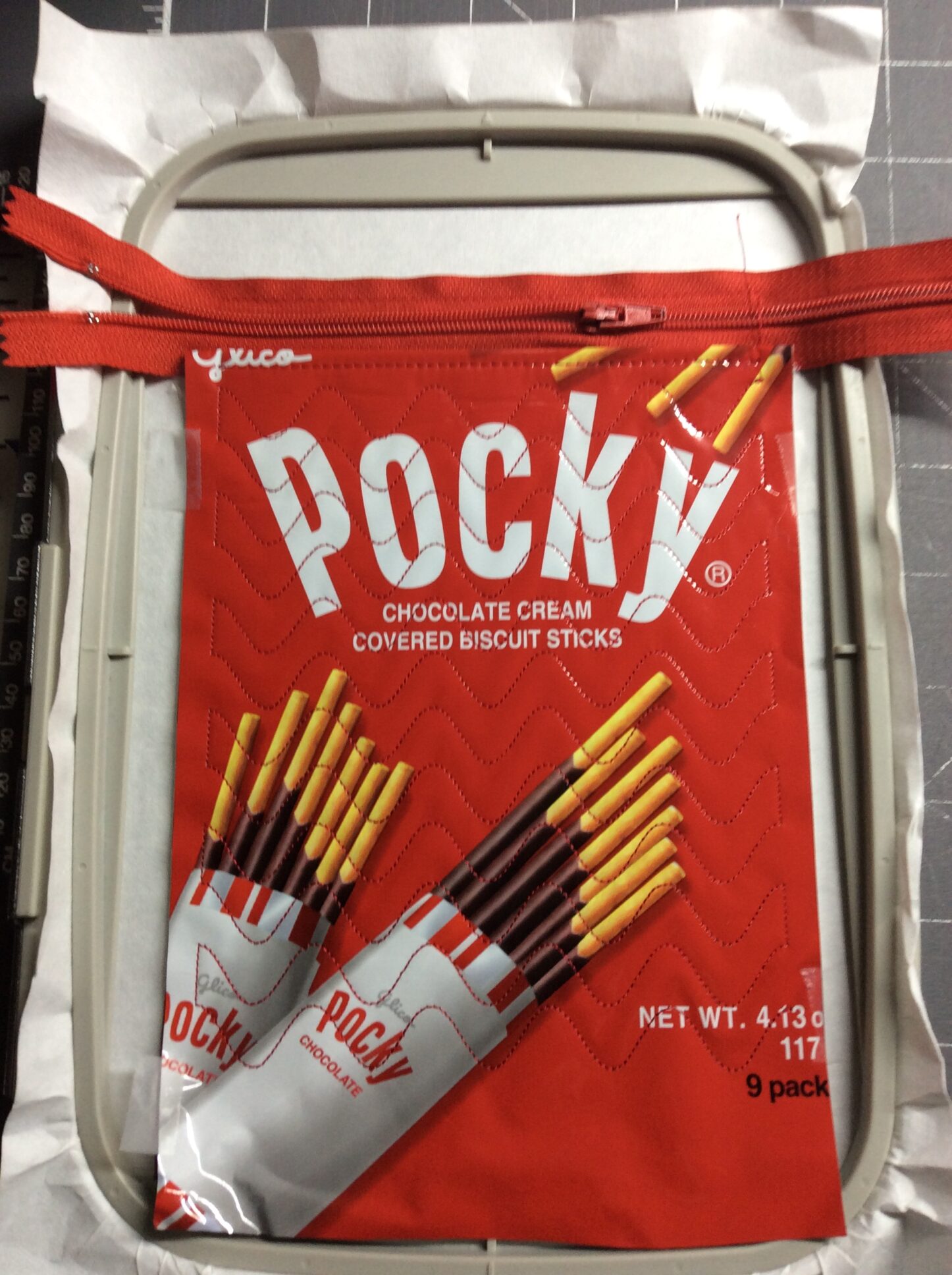
OPEN THE ZIPPER NOW!
If you don’t open the zipper now it’ll be forever sealed – doubly so if your zipper pull is outside the seams.
Here’s where I admit I got so caught up in making sure I got the zipper opened, I didn’t take pictures, and on two of the three pouches I forgot to put any loops on. In my defense if you’re going to forget one of these two things, make sure it’s the loops. At any rate, the next two stitch colors are the tackdowns for loops. You may only want to put one loop on, or none, in which case still do the tackdowns, they will reinforce the zippers.
The loops point inward, with their raw edges matching (or going past) the edges of the vinyl. I used fold-over elastic for the M&M’s bag, and put a split ring on afterward. You can use sturdy ribbon or bias binding if you prefer. If you are putting a swivel hook on, tape it on place so it doesn’t end up underneath the needle. Whatever you choose, center it over the zipper teeth and make sure it’s far enough from the top it ends before the rounded corner or it’ll pucker weirdly.
After that’s done, place the outer back face-down on top and stitch the back tackdown. Take extra care as the needle goes past the zipper pull, because the lump will try to pull the edge of the fabric in.
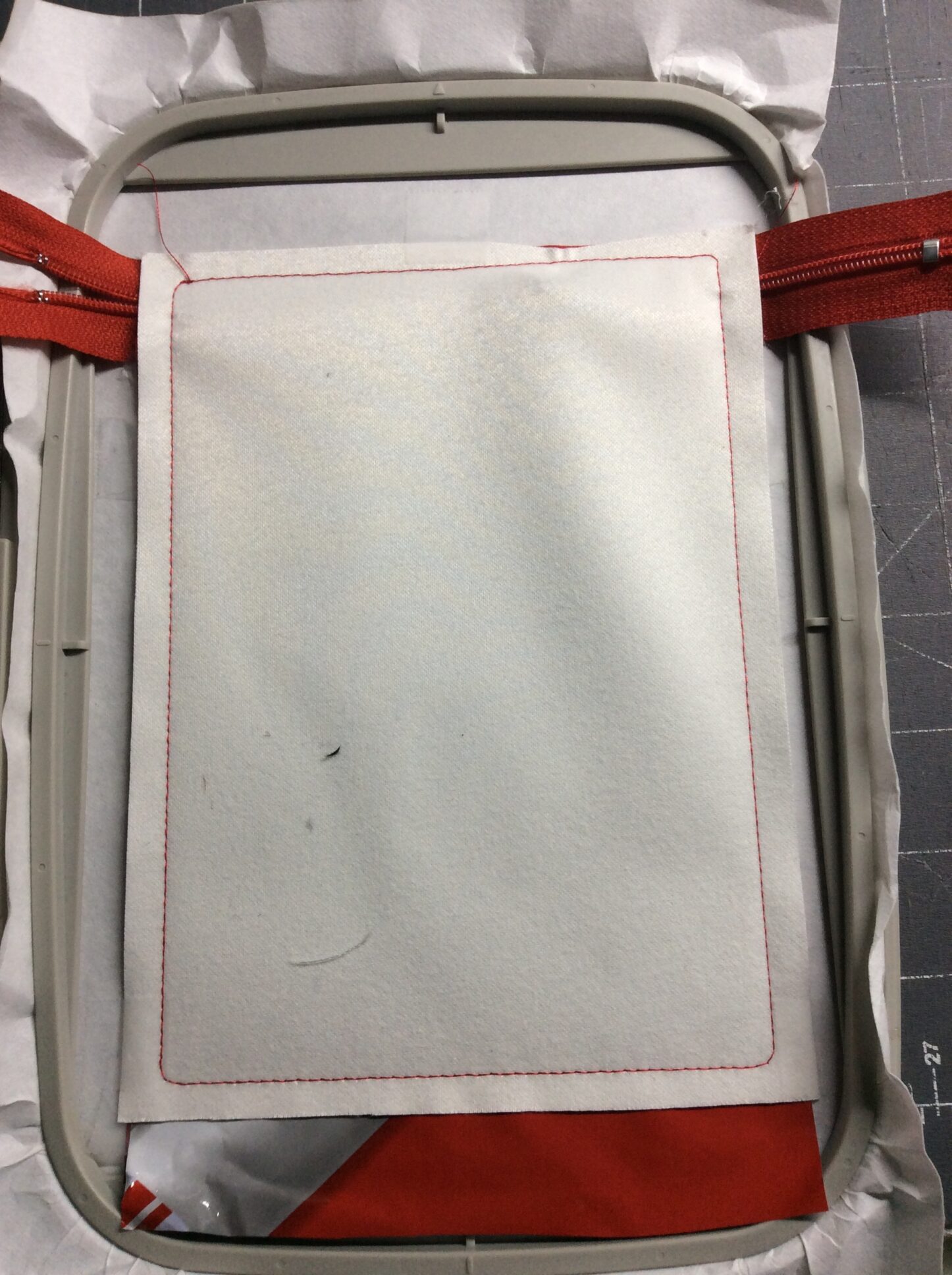
Finally, place the lining right-side down on the back of the hoop. Make sure it extends over the placement rectangle on every side.
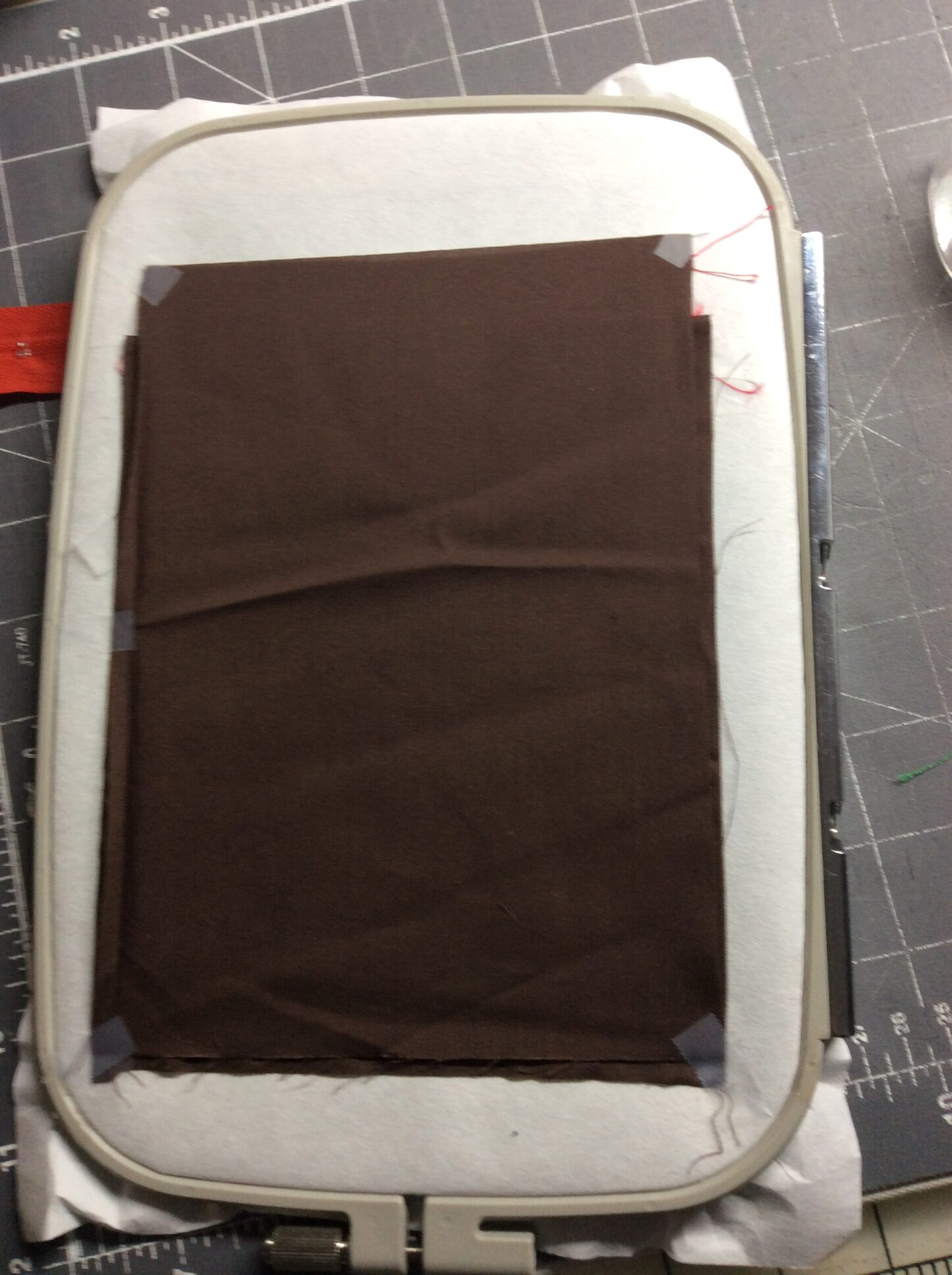
That should be the last color, and now you can un-hoop it. Don’t do like I did and forget you’re not trimming a valet tray – you want at least a 1/4″ seam allowance, not the 1/8″ I left. Trim the bulk out of the corners, though, at least on the vinyl pieces.

Now we turn the thing inside out. Not right-side out yet – you’ll actually end up with both linings on the outside. Ladder- or whip-stitch the opening closed (this is where you want that quarter-inch seam allowance).
The stabilizer covers the zipper opening. Carefully remove all of it.
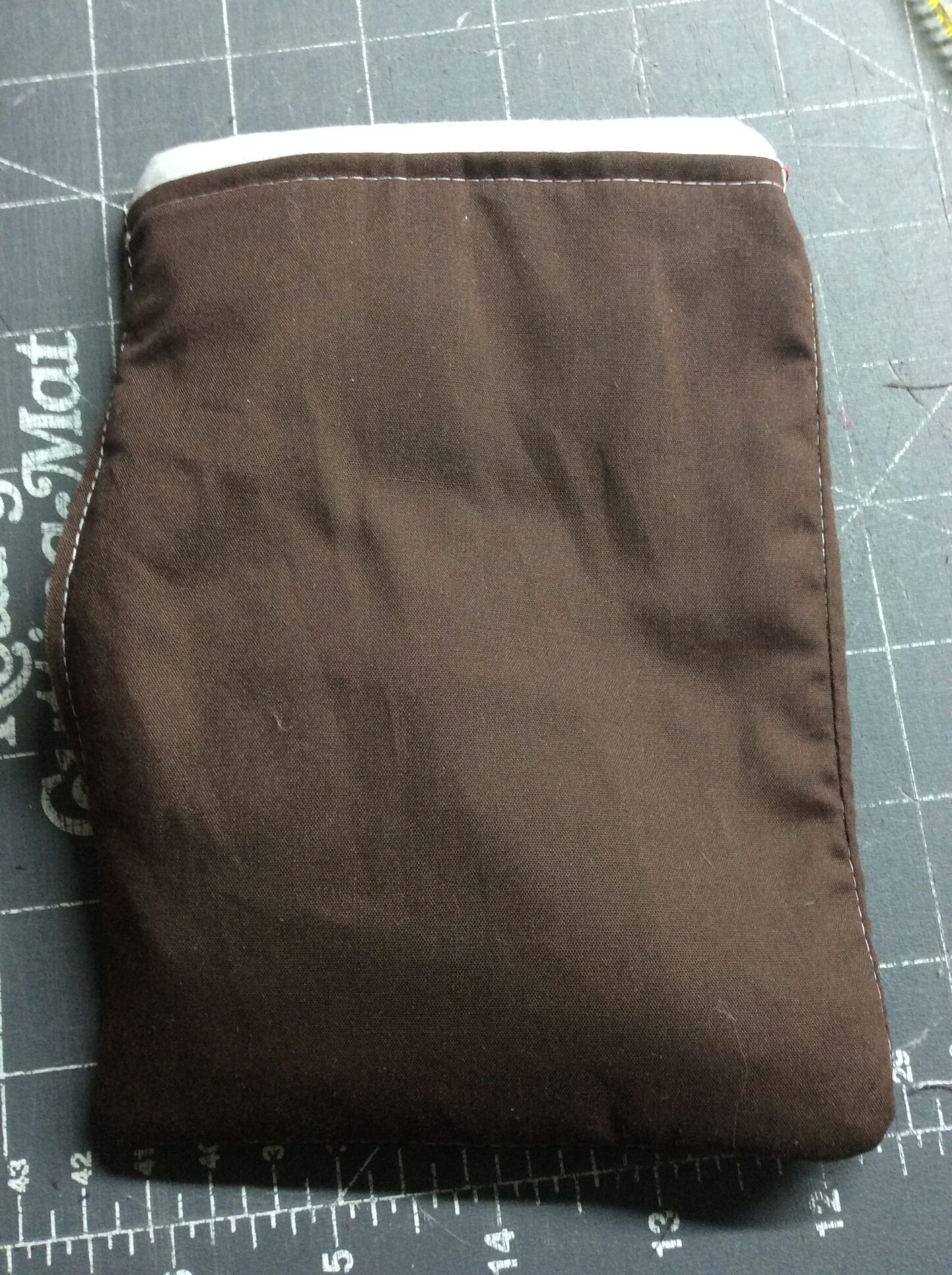
Now turn the pouch right-side out. Finger-press the seams and corners, zip it up, and you’re done!
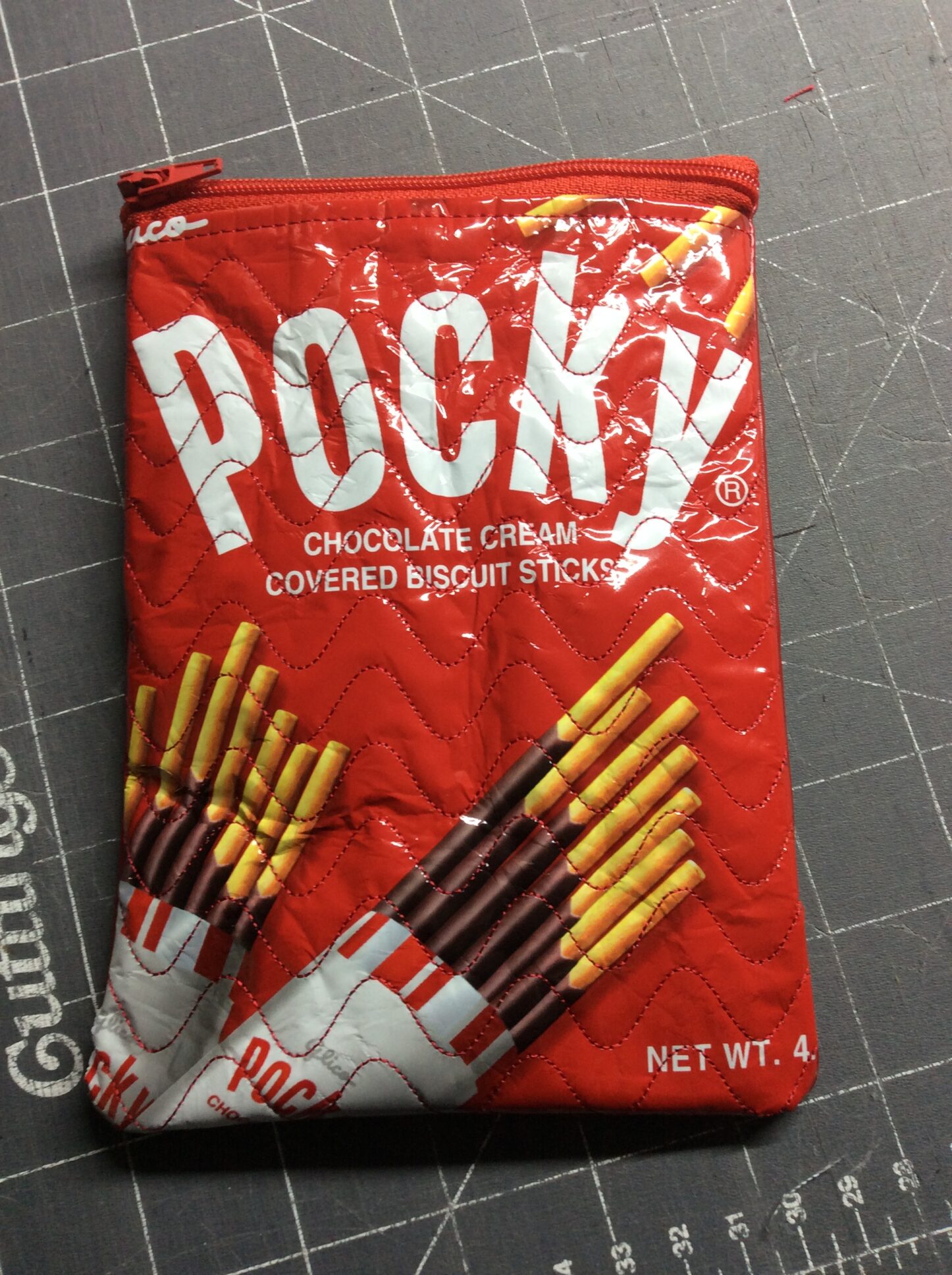
The files are for a 5×7 hoop, but the SVG source is included as always so you can easily size it down to 4×4 (98mm square, for Brother machines). Don’t just shrink everything (unless you can find very narrow zippers) – instead, start with the wide pouch. Delete the quilting stitch, Edit > Select All in All Layers, then switch to the node editing tool. Select all the righthand edge nodes (including the curved corners) and bring them to the right. Hold down the shift to constrain it from shifting up or down. Then do the same for the bottom nodes (including the corners again), bringing them up. You’ll need to adjust your turning opening (it’ll need to be nearly the width of the pouch base), and add a quilting layer in if you want one, but that’s it.
[Flat Zip Pouch, Wide (5×7)] [Flat Zip Pouch, Tall (5×7)] [Flat Zip Pouch (4×4)]
This is copyrighted by Silver Seams in the year noted in its URL, and licensed under Creative Commons’ CC-BY-SA. This basically means you’re free to sell items you make from it, provided you give reasonable attribution, and that if you modify it you’re required to share your changes with the world under the same license (the actual legal bits are in the link).
As with other free embroidery patterns here, the SVG file is included in the ZIP package so you can modify it in Inkscape and produce your own variations/sizes/etc.
